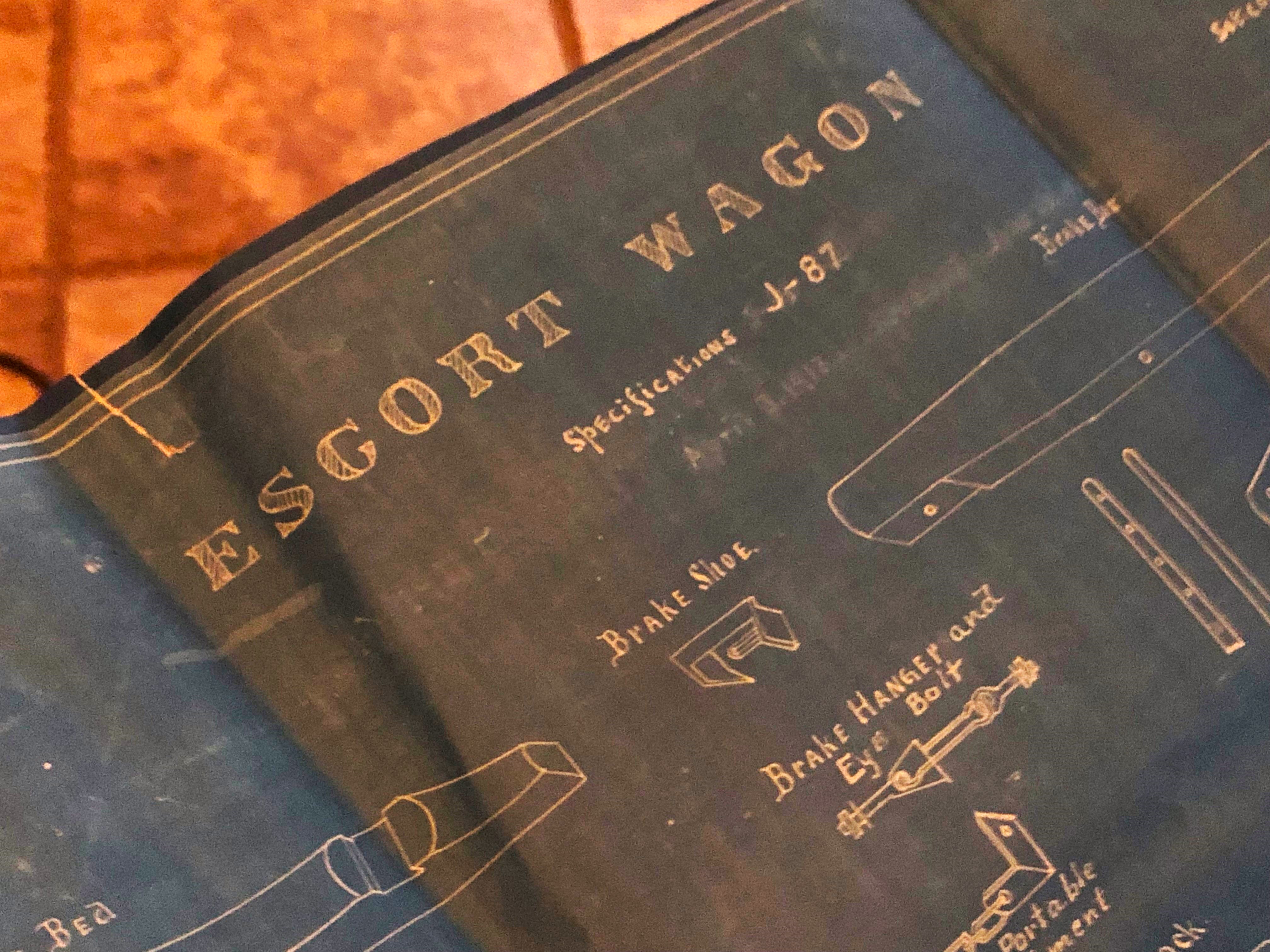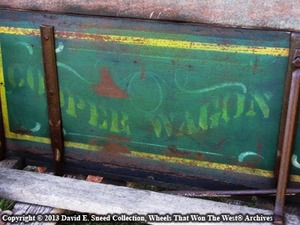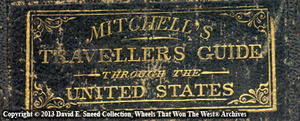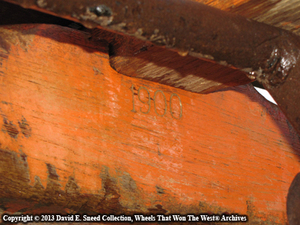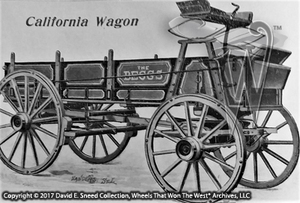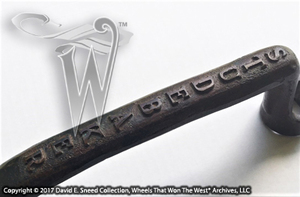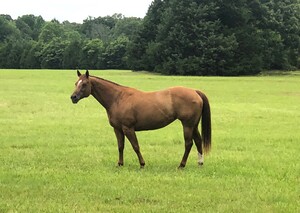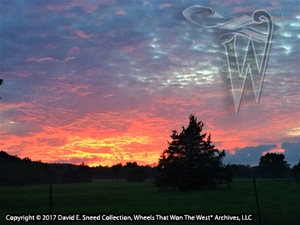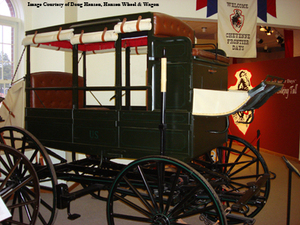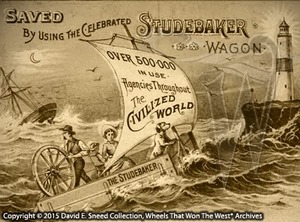There's a scene in Clint Eastwood's iconic film, "The Good, The Bad, and The Ugly," where his character (Blondie) looks across a battlefield and says, "I've never seen so many men wasted so badly." We could spend a lot of time talking about the significance of that statement but I'm going to dive off into a parallel thought for vehicle collectors.
Does anyone have any idea how many horse-drawn wagons and stages were made during the 19th and early 20th centuries? There are no clear estimates of final numbers, but I can confidently share that it's easily in the tens of millions, perhaps much higher. Whatever the top end digit, it's a mind-boggling number that's bolstered by industry statistics that we do know. Most major manufacturers left some sort of footprint as to the number of vehicles built. Joseph Murphy, in St. Louis, was quoted as saying his firm produced 200,000 rigs in his day. Many firms claimed yearly production numbers from 30,000 to 75,000 wood-wheeled vehicles each year. The legendary Studebaker Brothers Company regularly stated that in their first half century they churned out a million horse-drawn vehicles... ultimately producing one every six minutes by their count. Likewise, the Kentucky wagon company also boasted of building a million wagons by the mid-teens. That's a lot of get-up-and-go. Unfortunately, the majority of it has got-up-and-went!

From Studebaker to the tens of thousands of other makers, the bulk of early vehicle production has been treated like hammers on an anvil. Elaborately decorated and designed, these all-purpose muscle machines were regularly hit, rocked, pushed, pulled, twisted, cracked, and soaked. They were generally forced to fend for themselves in the beatings. It's a legacy that's still happening as too many of these wheeled warriors are regularly left outside to suffer under the relentless pressure of the sun, wind, rain, snow, ice, heat, cold, and lack of maintenance. I had a conversation with a fellow enthusiast a while back and we talked about how hard it is to find collector-grade wagons these days. My advice to him was, "Buy the best you can afford now. Don't wait because the surviving selection is almost sure to get worse and the number of folks vying for these pieces is increasing." This assessment doesn't come from some clairvoyant capability on my part. Rather, it's the benefit of hindsight helping with foresight. When I first started collecting, I regularly came across nice, high and low wheel wagons in solid condition with great paint. In the last three-plus decades, that reality has disappeared and, due to the challenges of finding great pieces, everything continues to go up in value - the good, better, and the best.

One of countless historic bone piles scattered throughout the U.S.
Likewise, I've even seen the value of bone piles increase. What once was considered trash is now often viewed as treasure. The best increases have come in circumstances where the identity of the parts in the bone pile can be objectively confirmed. I'm convinced that the ability to recognize unique pieces - whatever the condition - will allow collectors, restoration shops, and eclectic enthusiasts the opportunity to go beyond rumor and supposition to help save the rarest of survivors, no matter the condition.
To the points above, I'll be the first to admit that I can be particular when it comes to a vehicle. I've been looking for a 42-inch drop tongue, through-bolted Studebaker running gear for close to fifteen years. In that time, I've seen just one and it was an absolute wreck. Looking back, I wish I'd bought it. Yes, it would have cost me more to repair but, it was there. It existed and I passed on it because it needed some upkeep. It was another of my live and learn mistakes. If you've never had a moment like that, get ready because you will. All is not lost in failure, though. Learning from those lapses in judgement can be a huge help in future decisions.

This Bain chuck wagon is located in Miles City, MT at the Range Riders Museum. Bain was one of the more notable western brands and this example is a Mountain wagon design. It's an impressive piece to come across.
While this post isn't technically about rarity, in some ways, it's all about recognizing rarity and value when we see it. And yes, from a strictly practical perspective, all wood-wheeled wagons from the nineteenth and early twentieth centuries are 'rare'. However, some of these old soldiers take that term to more emphatic levels. For me, the rarest of these isn't necessarily the one with the most surviving paint, best wheels, least amount of use, or most complete condition. The scarcest examples, from my perspective, are often defined by how exclusive, original, and historic they are. Wouldn't it be exciting to uncover (even remnants) of the 'Giant Moline' (double-sized wagon) that was built and showcased during the 1904 World's Fair and many other promotional venues afterward? Sadly, I believe this part of the past was scrapped long ago. Likewise, I have a photo of a wagon that was shown at the first World's Fair in 1876 at Philadelphia. I've even uncovered one of this wagon maker's business cards handed out during the same Exposition. Talk about finding a needle in a haystack! Even with patent file documentation, the photo, business card, and a profile about it written in "The Carriage Builder's Reference Book" in 1877, unfortunately, the actual wagon seems lost to time. With that said, if a business card can survive almost a century and a half, maybe, just maybe this twin axle steering machine is still out there somewhere. You can read more about this wagon in an article I wrote over a decade ago. Check out the writeup called, "A Ticket To Tomorrow" within the 'Articles' section on our website.

Check out the story of this unique wagon in our 'Articles' section.
Drilling down deeper, some of the more notable brands that were around during the initial settling of the Old West also have a huge potential for commanding greater value and desirability. I profiled a few of those names in another blog back in December of 2014 (See 'The Top Wagon Makers In The West' - this includes primary source details from an 1879 writeup on the subject).
Reinforcing the above thoughts, I know a few folks with high wheel (at least 52"), drop tongue Owensboro brand wagons. These pieces are extremely tough to come by and those individuals are justified in being especially proud to own one of the more elusive parts of history. Likewise, wagons that can objectively be tied to the 1860s-1880s are hard to locate. I know of only a handful of surviving Peter Schuttler wagons with dates prior to 1890. I've never seen a surviving spring wagon from Schuttler but they definitely built them. A person could legitimately ask that if there were tens of thousands of Schuttler wagons made between 1843 and 1890, why haven't more survived? Well, some of the scarceness is driven by the passage of time and natural attrition. A lot of it, though, comes from two other sources - Don't know and Don't care. What I mean by that is that many of these old wheels have either been unrecognized and subsequently overlooked or they were treated indifferently and allowed to disappear.

I've been singing this song for ages and some have picked up on it - and rewarded themselves with great finds! Regrettably, we still see a lot of super rare pieces left to rot as yard ornaments. It's hard to see historic value passed over. Put another way, if you walked by a handful of $100 bills in an empty parking lot, would you pick them up or leave them for the wind and rain to wash away? If you found a jar full of gold coins buried under a dilapidated barn would you celebrate the discovery? If you walked by the only surviving Murphy, Kansas, Espenschied, LaBelle, or Hiram Young farm or freight wagon, would you know it? Some of the rarest and most historic sets of wheels are still waiting to be discovered.

This restored Dougherty was originally built around 1875 by the Kansas Manufacturing Company in Leavenworth, Kansas. It may be the only surviving vehicle from this legendary firm.
Over the generations, countless legendary brands have been used up, cut up, burned up, piled up, and blown up. It's enough to make a person wonder if we will ever wake up to the history that literally opened the West. From one end to the other of these rolling history books, the Good news is that there are still a number of great finds for every budget, if we're alert and don't procrastinate when we see them. The Bad part of the story is that too many are treated as if they can be easily replaced and the Ugly moments are the times when an incredibly rare piece of our western past is allowed to roll out of existence with no one ever being the wiser.
Ps. 20:7
